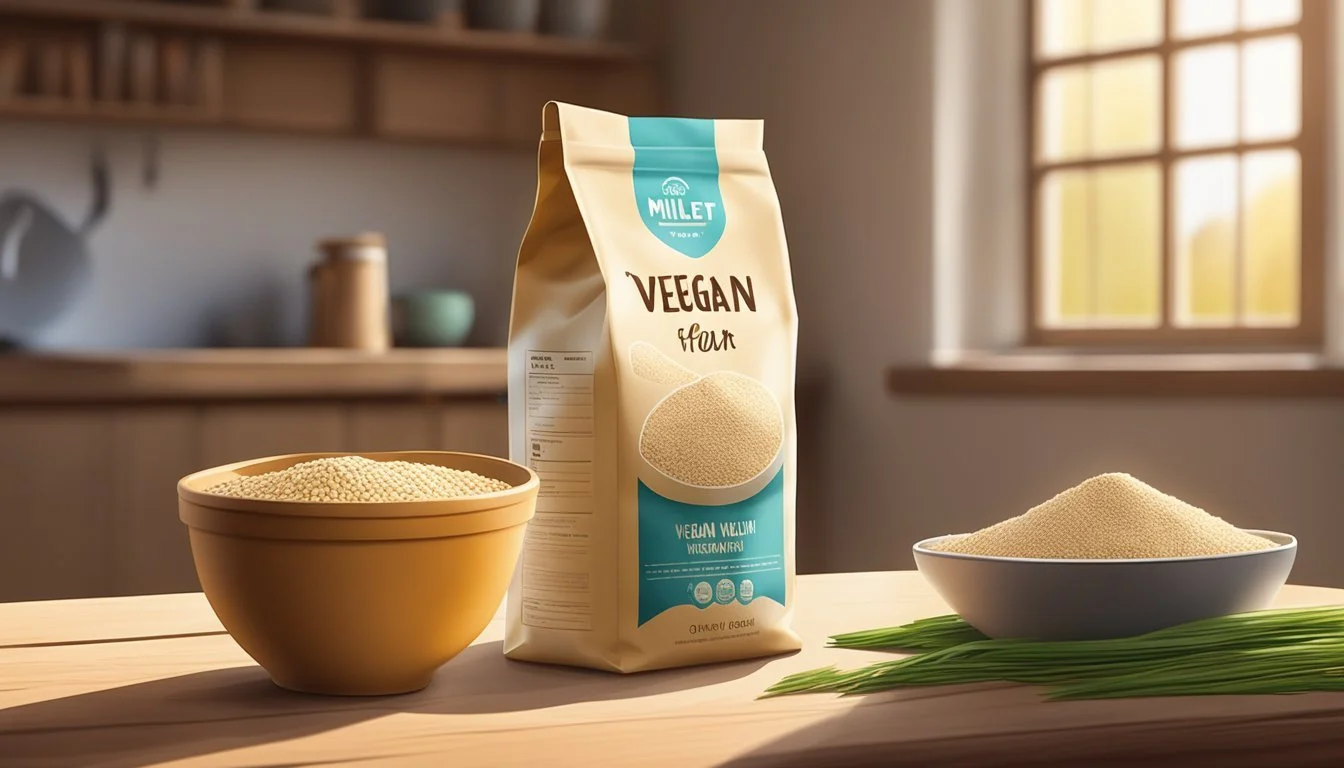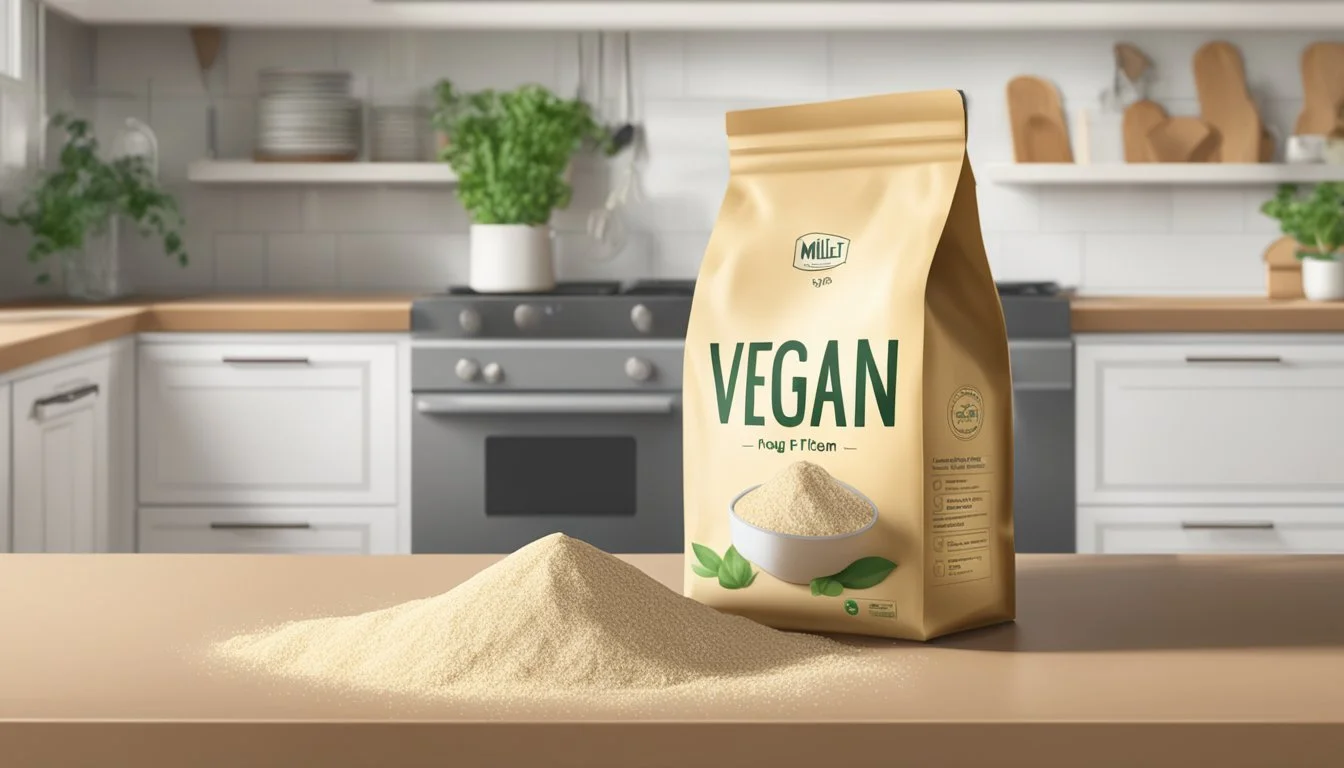Is Millet Flour Vegan?
Understanding Plant-Based Baking Ingredients
Millet flour is a popular ingredient in gluten-free baking and cooking, appealing to those who follow a vegan lifestyle or have dietary restrictions. As a product derived entirely from millet, which is a whole grain, millet flour is inherently vegan. It contains no animal products or byproducts, making it suitable for anyone adhering to a plant-based diet. The use of millet flour supports health-conscious choices, offering a nutritious alternative to traditional wheat flours.
The health attributes of millet flour contribute to its growing popularity among health enthusiasts. It's not just a safe choice for vegans; it’s also a wholesome option rich in nutrients. Millet is known for being a good source of vitamins, particularly B vitamins that are essential for energy metabolism, and minerals such as iron, magnesium, manganese, phosphorus, copper, zinc, and potassium. The inclusion of millet flour in vegan recipes ensures that while the diet remains cruelty-free and environmentally sustainable, it is also beneficial to personal health.
The versatility of millet flour in vegan cooking and baking is remarkable. It can replace traditional flour in many recipes, from bread to pastries, without compromising on taste or texture. Beyond being a simple substitute, millet flour adds a lightly nutty flavor to dishes, enhancing the culinary experience. For those following a vegan lifestyle, integrating millet flour into their diet is a way to embrace both the ethical and healthful aspects of their food choices.
Understanding Millet Flour
Millet flour, derived from a variety of small-seeded grasses, is celebrated for its nutritional benefits and suitability for vegan diets. It provides a rich array of vitamins and minerals, alongside being a versatile ingredient in cooking.
Definition and Origins
Millet refers to small-seeded grains from different species of the Poaceae family, making it a whole grain. Its origins trace back to Asia and Africa, where it has been cultivated for thousands of years. In certain regions, millet is a staple, utilized for its ability to grow in harsh conditions where other crops may fail.
Nutritional Profile
Millet flour is esteemed for its high nutrient content. Here's a brief overview of its nutritional elements per 100 grams:
Calories: Approximately 378
Protein: 11 grams
Fiber: 9 grams, making it high in fiber
Fat: 4.2 grams
Notable vitamins and minerals in millet flour include:
Iron: Essential for oxygen transport and energy production
Potassium: Supports nerve function and muscle contractions
Calcium: Vital for bone health
Vitamin A: Important for vision and the immune system
Antioxidants: Protects cells from damage
This flour is particularly beneficial for those on a vegan diet, providing nutrients that may be more challenging to obtain from plant-based sources alone.
Different Types of Millet
There are several types of millet, each with unique properties:
Pearl millet: The most common variety globally
Finger millet: Rich in calcium
Proso millet: A type of millet used often in flour production due to its soft texture
Millet varieties can differ in flavor and texture, with some being better suited for certain dishes. Proso millet, known for its pale yellow or whitish color, is popularly ground into a fine powder to create millet flour used in vegan baking and cooking.
Millet Flour in a Vegan Diet
Millet flour is a staple in vegan baking, valued for its diverse nutritional profile and allergen-friendly properties. This section explores how millet flour aligns with vegan dietary essentials, its nutritional benefits, and available alternatives.
Vegan Diet Essentials
A vegan diet eliminates all animal products, focusing instead on plant-derived foods. Essential attributes of vegan ingredients include being dairy-free, egg-free, and free from all animal derivatives. Millet flour, which is naturally gluten-free and nut-free, fits perfectly within a vegan diet, providing an ideal alternative for baking and cooking.
Benefits of Millet Flour
Millet flour offers several health benefits, making it an attractive choice for those on a vegan diet. It is not only gluten-free but also rich in nutrients, such as magnesium, phosphorus, and iron. Being dairy-free and nut-free ensures that those with allergies can enjoy millet flour without concern. The flour is also a good source of protein and fiber, facilitating a healthy digestive system and contributing to a balanced vegan diet.
Millet Flour Alternatives
While millet flour is a nutritious choice, some may seek alternatives due to personal preferences or availability issues. Alternatives include:
Quinoa flour: gluten-free and high in protein
Sorghum flour: nut-free and a good source of antioxidants
Rice flour: especially useful in gluten-free baking
Coconut flour: adds a mild, sweet flavor and is also grain-free
Each of these flours is vegan-friendly and can substitute for millet flour in recipes, often with a simple one-to-one ratio.
Cooking and Baking with Millet Flour
Millet flour offers a nutritious, gluten-free alternative for vegan cooking and baking, providing a subtle flavor and light texture to various recipes. Understanding the basics, professional baking tips, and proper storage ensures the best results.
Basic Millet Flour Recipes
Millet Cookies: For a simple treat, combine millet flour with salt and baking powder, using a sieve or whisk to ensure even distribution. Create a separate mixture with sugar, oil, and vanilla, then combine both mixtures to form a dough.
Flourless Millet Oat Bread: A yeast-free recipe involves mixing wet ingredients like water and flaxseed meal with millet flour, oats, and baking soda, followed by baking in a preheated oven.
Millet Apricot Energy Bars: Mix millet flour with chopped apricots, nuts, and a binding agent like syrup or sugar-free alternatives for a nutritious snack.
Professional Tips for Baking
Consistency: Use a high-speed blender to achieve a fine millet flour consistency, and a sieve for evenly mixed dry ingredients.
Vegan Substitutes: Use flaxseed meal or cider vinegar as a binding agent in place of eggs, and psyllium husks or xanthan gum-free alternatives for gluten structure.
Storage and Freshness
Storage: Store millet flour in an airtight container at a cool, dry place or refrigerate to extend its shelf life.
Avoid Moisture: Prevent exposure to moisture which can cause the flour to clump and spoil.
Freshness: Check for freshness regularly, as millet flour can develop off-flavors if stored improperly or for too long.
Specialty Millet Flour Creations
In the realm of vegan baking and cooking, millet flour stands out for its versatility. Rich in B vitamins and easily yielding a fine-textured product, this gluten-free flour is ideal for a variety of culinary delights.
Gluten-Free Baking with Millet Flour
Millet flour shines in gluten-free baking, offering a healthy alternative to traditional flours. Its fine texture allows for soft and scrumptious bread, which can be achieved with minimal ingredients. For instance, Gluten-Free Millet Bread can be made using a combination of millet flour and oat flour – a formula that assures a toasty exterior with a gooey middle. Recipes often call for as few as five ingredients, making this a straightforward option for any home baker.
Savory Millet Flour Dishes
In savory dishes, millet flour adds a nutty flavor and is a superb thickening agent for soups and sauces. It pairs well with spices and hummus, turning simple meals into hearty ones. Vegan chefs might utilize millet flour in making a Millet Veggie Burger, where its binding properties help maintain a satisfying texture. To preserve nutrients and achieve a healthy crunch, patties can be baked on a cooling rack.
Desserts and Sweet Snacks
For a tea-time snack, Millet Cookies present an easy-to-make delight that complements a warm cup of herbal tea. Millet flour contributes to a chewy texture, and when combined with coconut sugar, delivers a subtle sweetness with a lower glycemic index. With creative flair, one can incorporate sorghum or spices to enrich the flavor. After baking, allowing cookies to rest on a cooling rack ensures they develop the perfect consistency—crispy on the edges while maintaining a gooey centre.
Millet flour's compatibility with whole grains and naturally sweet ingredients makes it an excellent choice for health-conscious dessert lovers. Simple, fine-textured cakes and muffins are easily within reach, bringing a new level of enjoyment to gluten-free, vegan treats.
Practical Considerations
In using millet flour, one must consider how it alters recipes, texture, and flavor, as well as its suitability for those with allergies. These practical considerations ensure that millet flour is used effectively while adhering to vegan and allergen-free requirements.
Substituting Millet Flour in Recipes
Substituting millet flour in recipes that traditionally use wheat flour can be a simple process, especially when aiming for a gluten-free result. One should typically use a 1:1 ratio for most recipes; however, in baking, combining millet flour with other gluten-free flours like buckwheat flour, rice flour, or cornmeal can improve the texture. For example:
Bread recipes: 50% millet flour, 25% rice flour, 25% cornmeal
Cake recipes: 40% millet flour, 30% oat flour, 30% buckwheat flour
Texture and Flavor Adjustments
Millet flour imparts a light, sweet nuttiness that differs from the more neutral taste of wheat flour. It also results in baked goods with a crumbly texture. To achieve a texture closer to traditional wheat products, experiment with adding xanthan gum or guar gum as a binding agent. A teaspoon per cup of flour can be an effective starting point.
Allergic Considerations
For individuals with gluten intolerance or celiac disease, millet flour is an excellent nut-free and gluten-free alternative. However, when purchasing millet flour, it's critical to check that it is labeled certified gluten-free, as cross-contamination can occur during processing. Additionally, those with a specific millet allergy should obviously avoid millet flour and may consider options like buckwheat flour or oat flour, provided they are processed in a gluten- and nut-free facility.
Community and Feedback
The "Community and Feedback" section provides a platform for individuals to exchange millet-based recipes, gather consumer insights, and interact with like-minded vegan and gluten-free communities. They emphasize the significance of shared experiences and the role of feedback in improving and diversifying millet flour culinary uses.
Sharing Recipes and Experiences
Food enthusiasts often share their vegan millet flour recipes, ranging from baked goods like millet biscuits to millet sandwich bread. These shared experiences enable others to discover and try new, creative ways to incorporate millet flour into their diets. Comments and reviews are integral in this process, often offering tips and suggesting variations that enhance the recipes further.
Gathering Feedback from Consumers
Consumer feedback is instrumental in shaping the perception of millet flour as a vegan ingredient. Individuals provide comments on aspects such as taste, texture, and the flour's performance in various recipes. Brands and recipe creators solicit this feedback to refine their offerings and to better serve the vegan and gluten-free market segments.
Engaging with Vegan and Gluten-Free Communities
Interaction with vegan and gluten-free communities occurs through various channels, including social media, forums, and dedicated cooking websites. These platforms facilitate discussions about the versatility and benefits of millet flour, and provide a space for engagement and support. The communities' collective knowledge contributes to a deeper understanding of millet flour's potential in a vegan diet.




